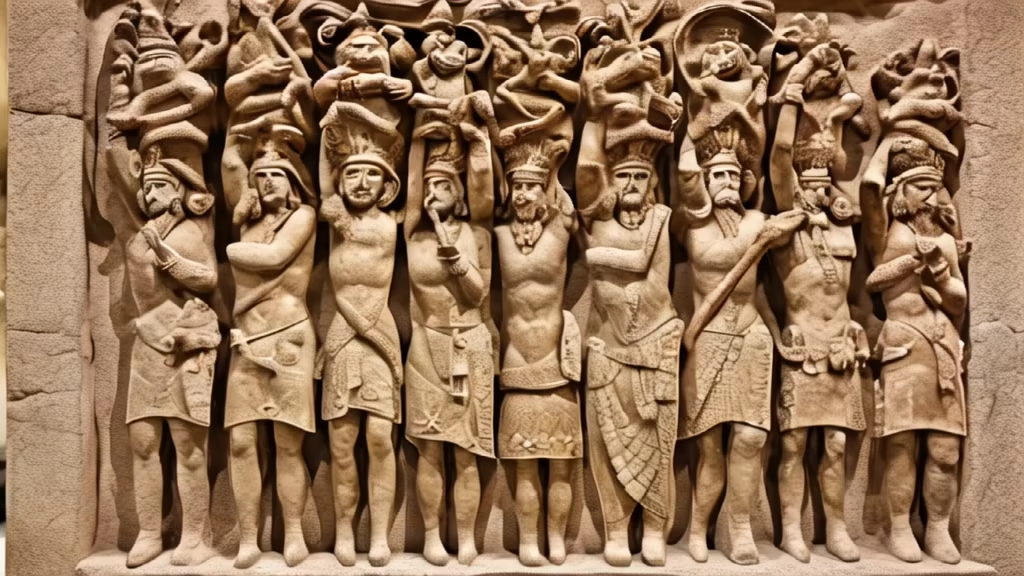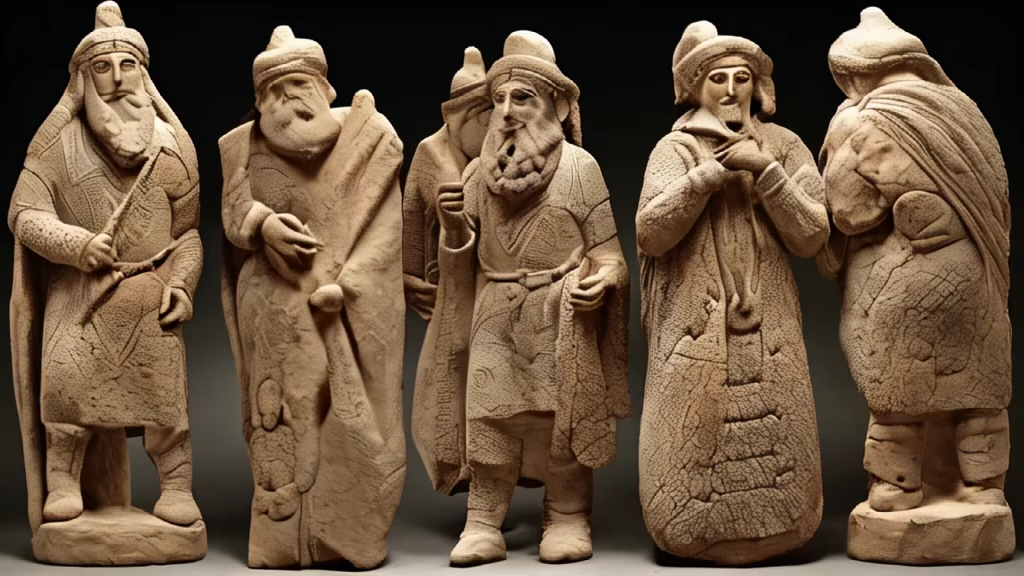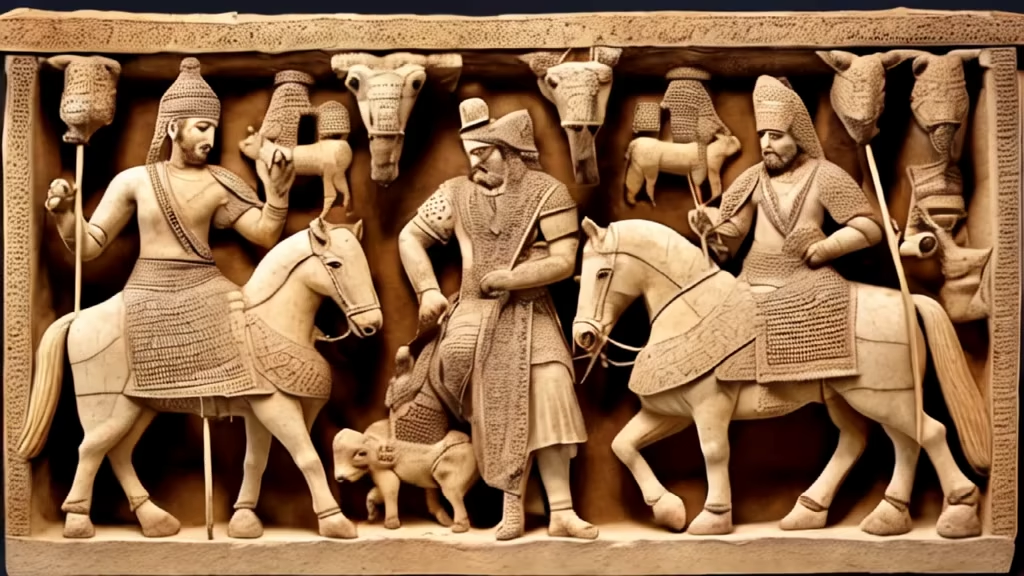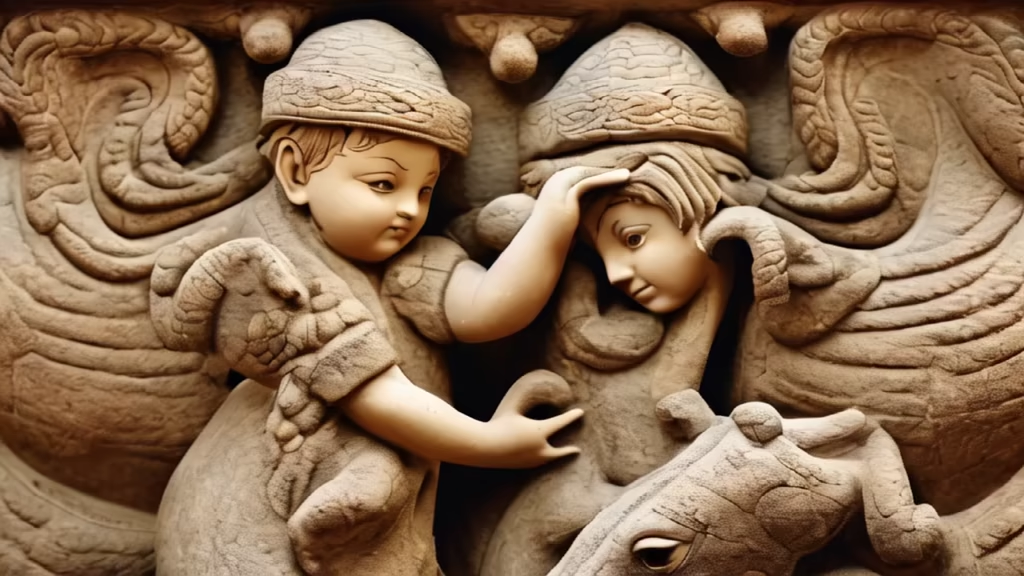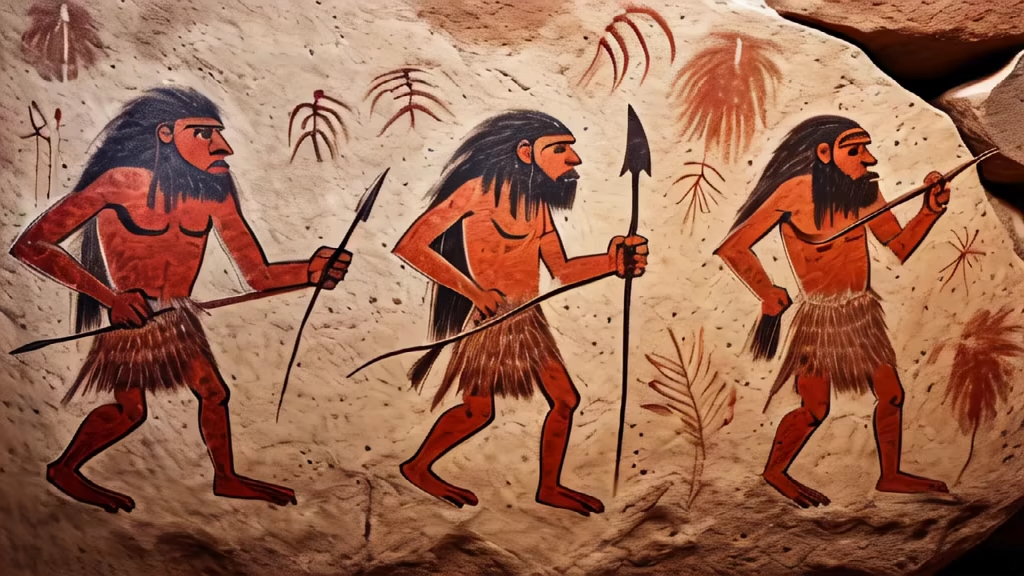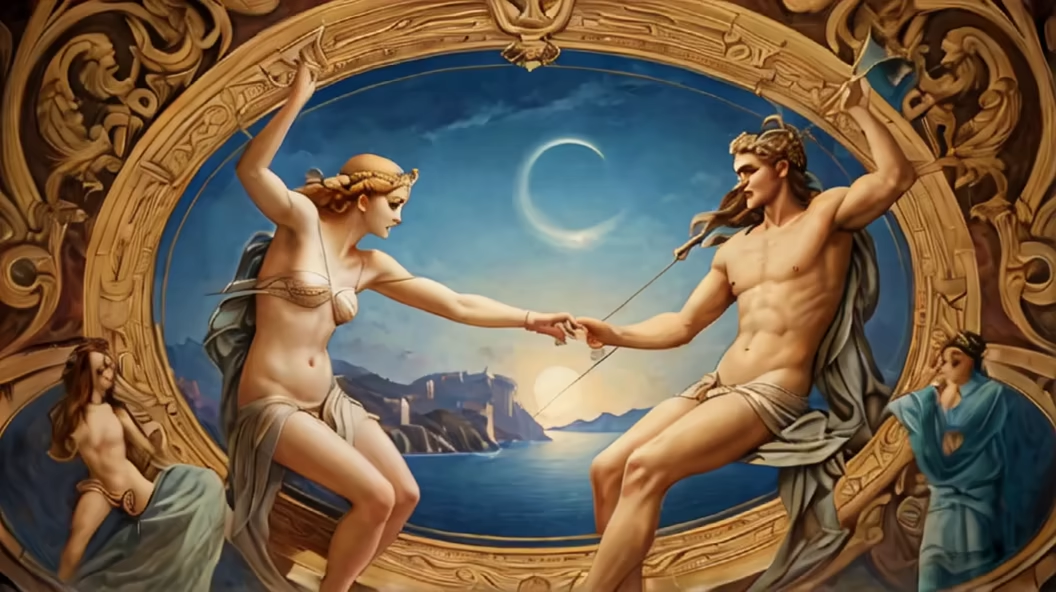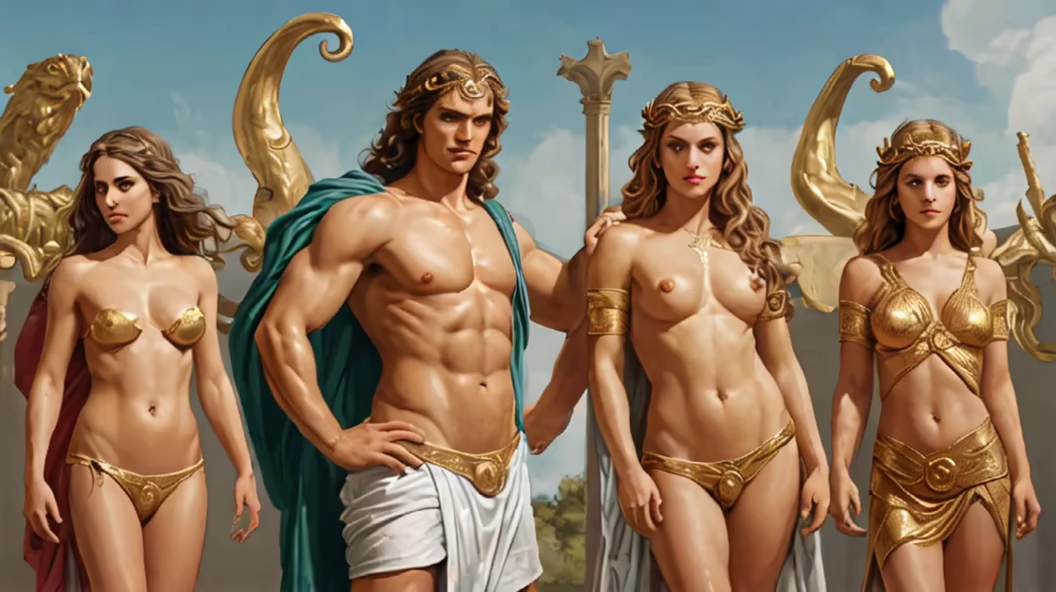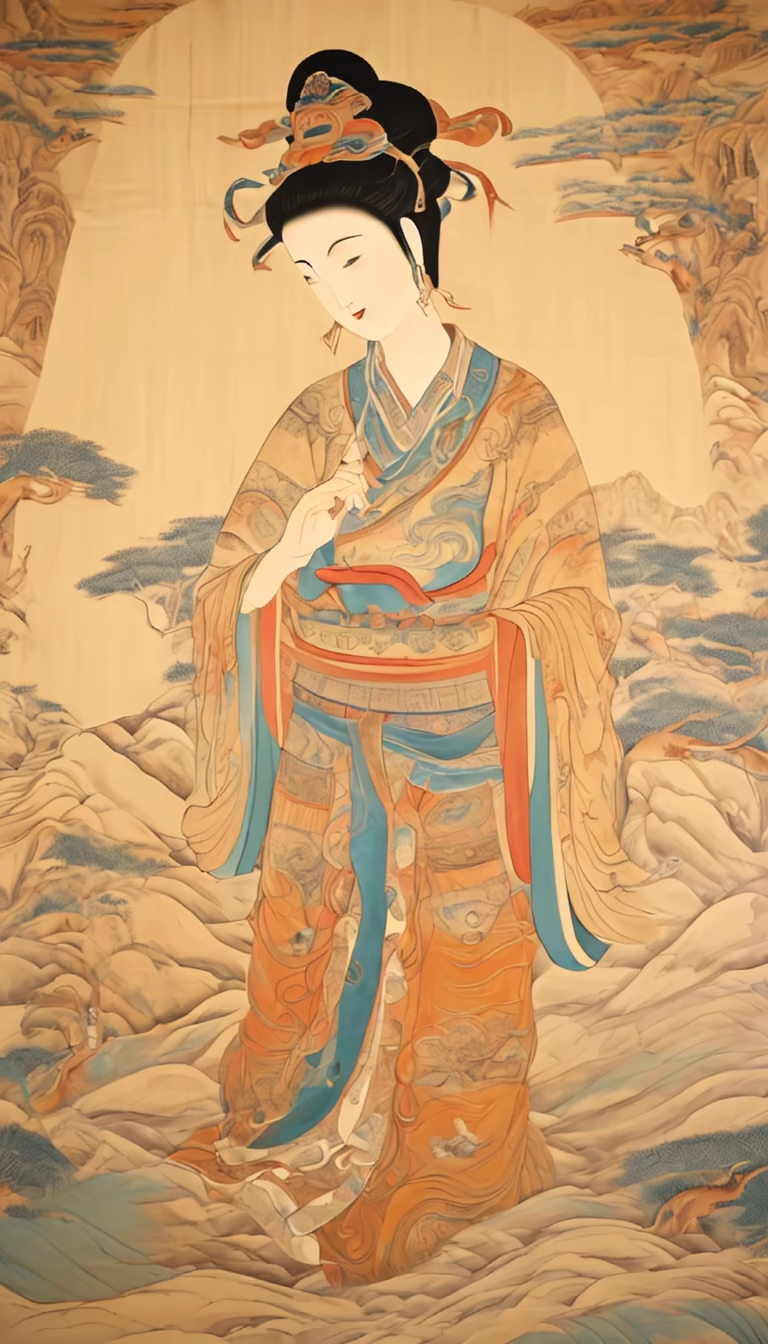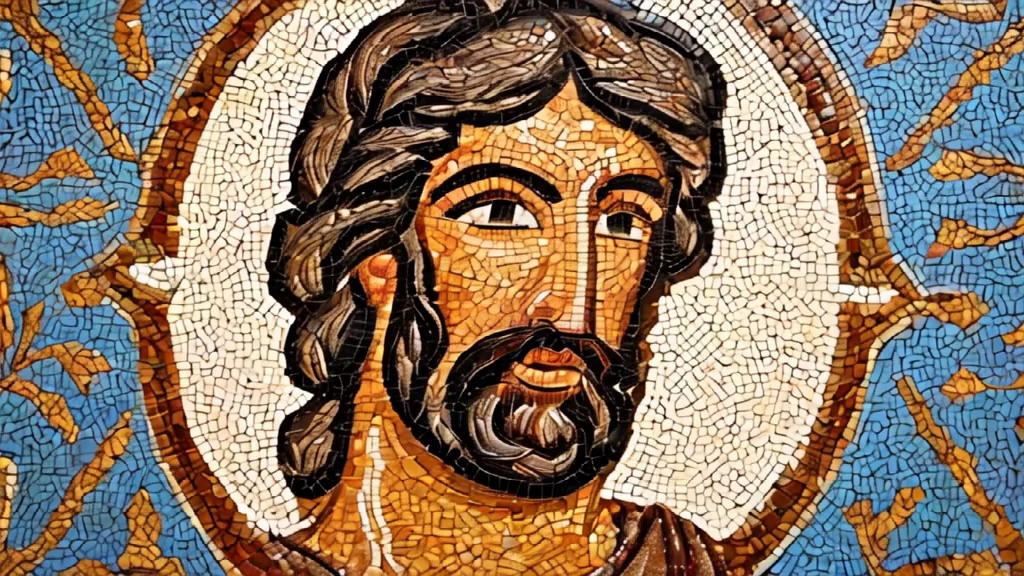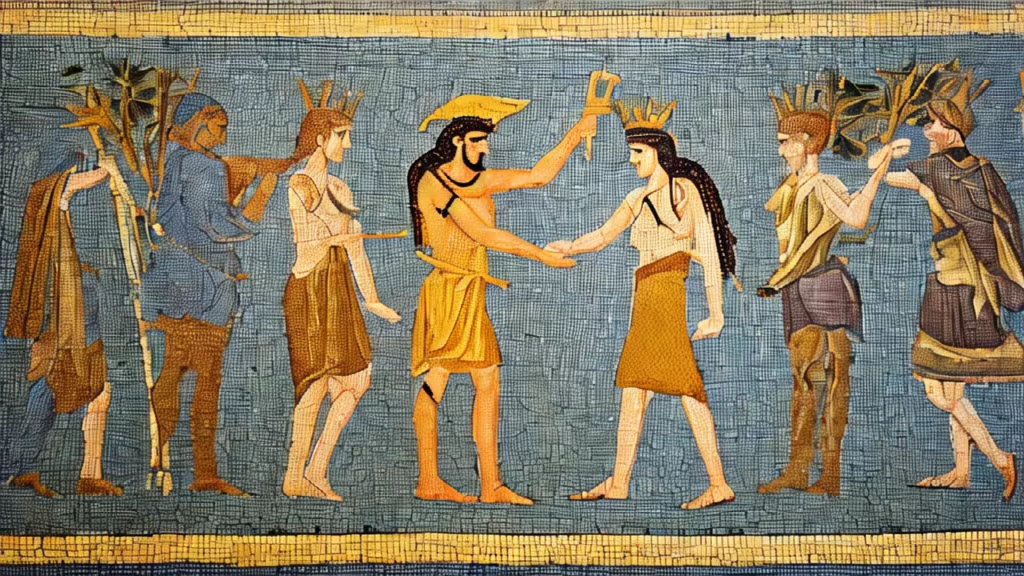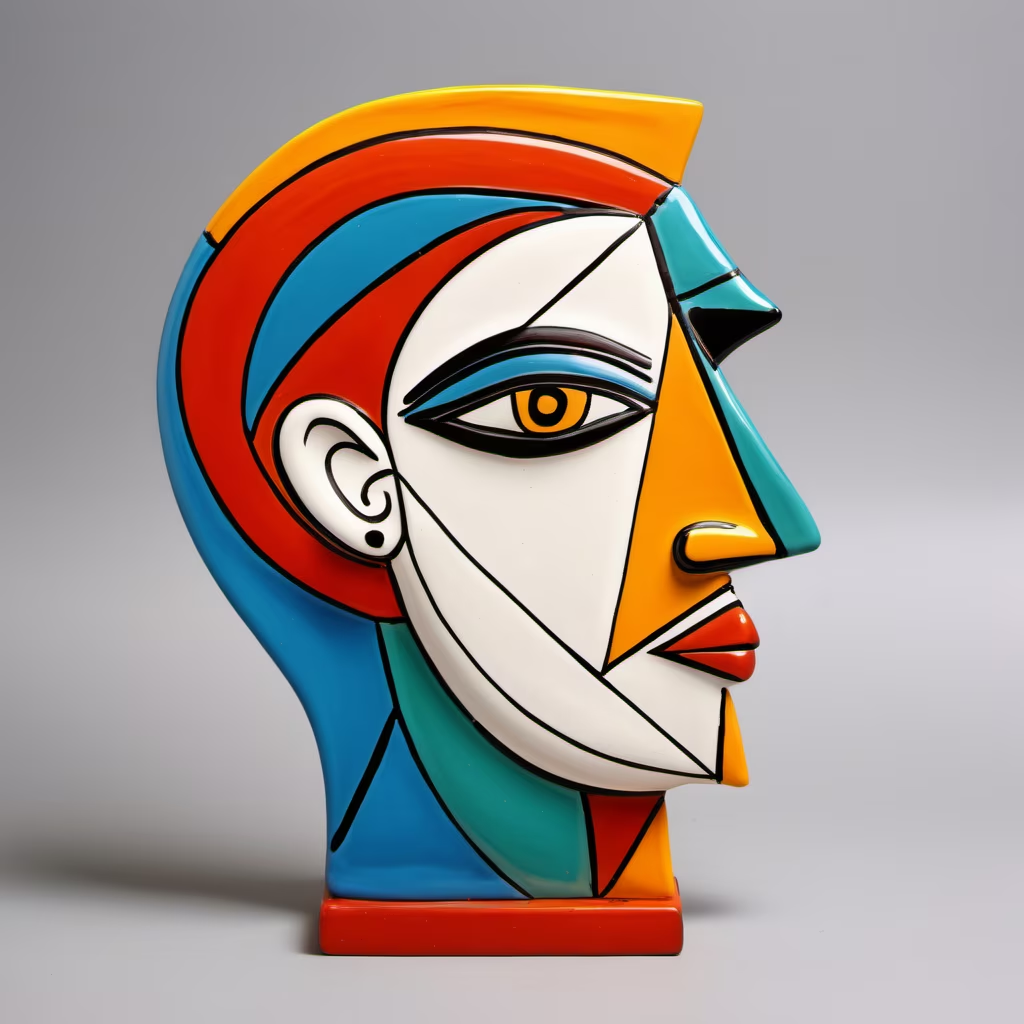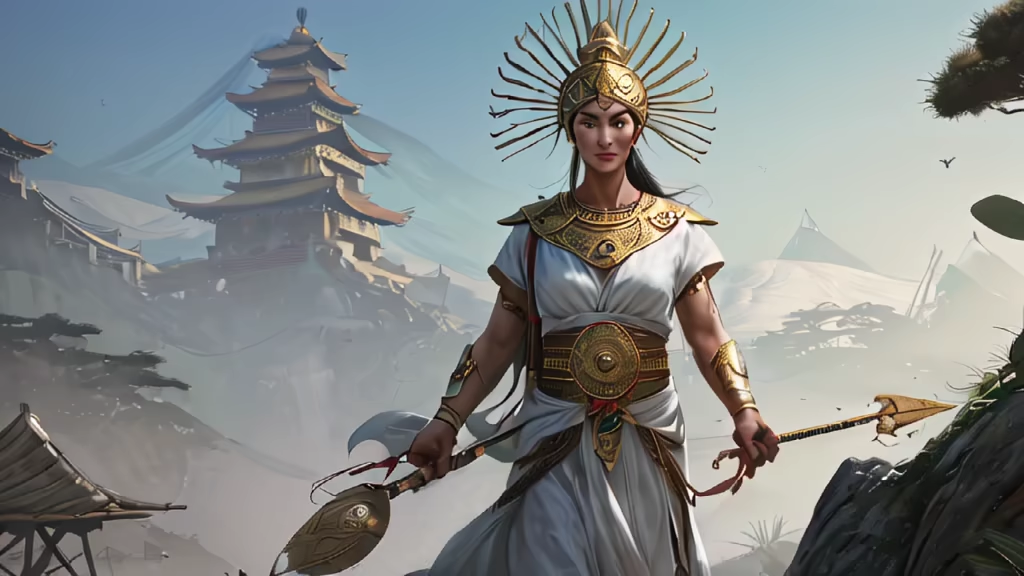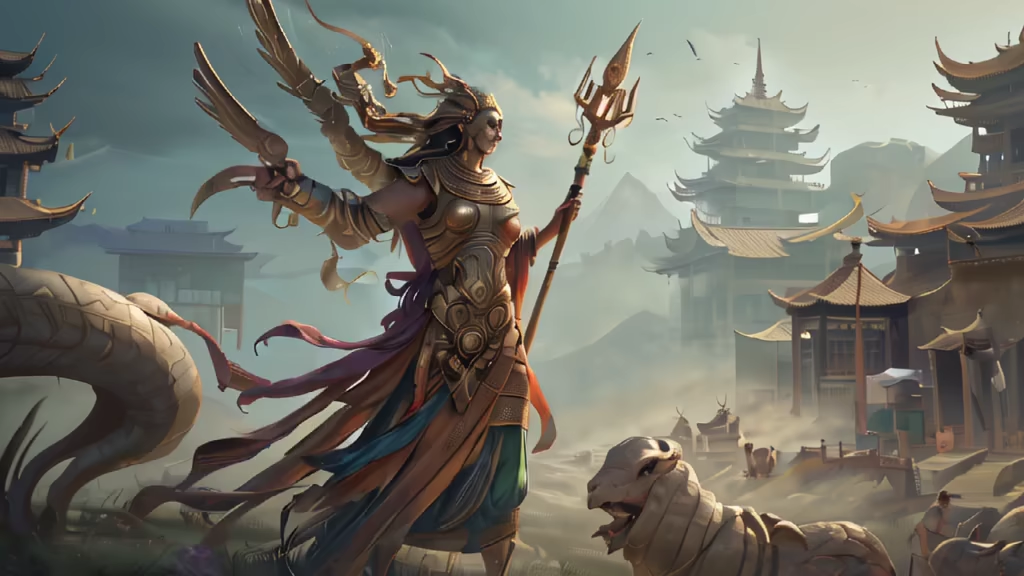





Prompt: Ancient murals from the Spring and Autumn period and theWarring States period depict scenes of sacrifice, hunting, and war.The sacrifice scene is solemn and mysterious, the hunting scene isviyid and realistic, and the war scene is bloody and intense. Themurals feature smooth and powerful lines, yivid colors, and lifelikeFigures, showcasing the artistic talent and historical style of theancients. These paintings are yaluable cultural relics that allow usto appreciate the art and history of ancient China.






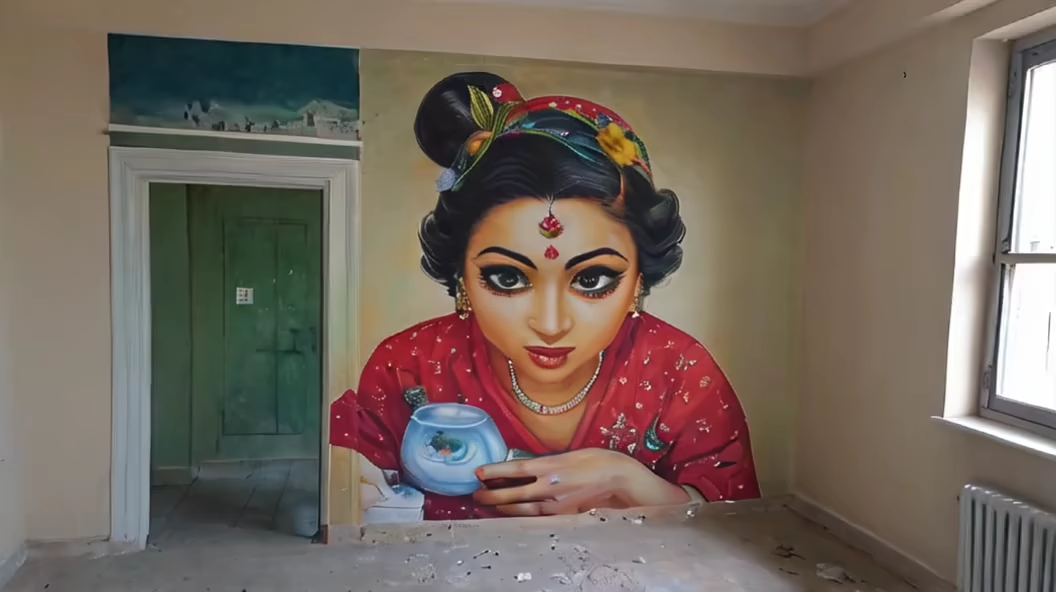
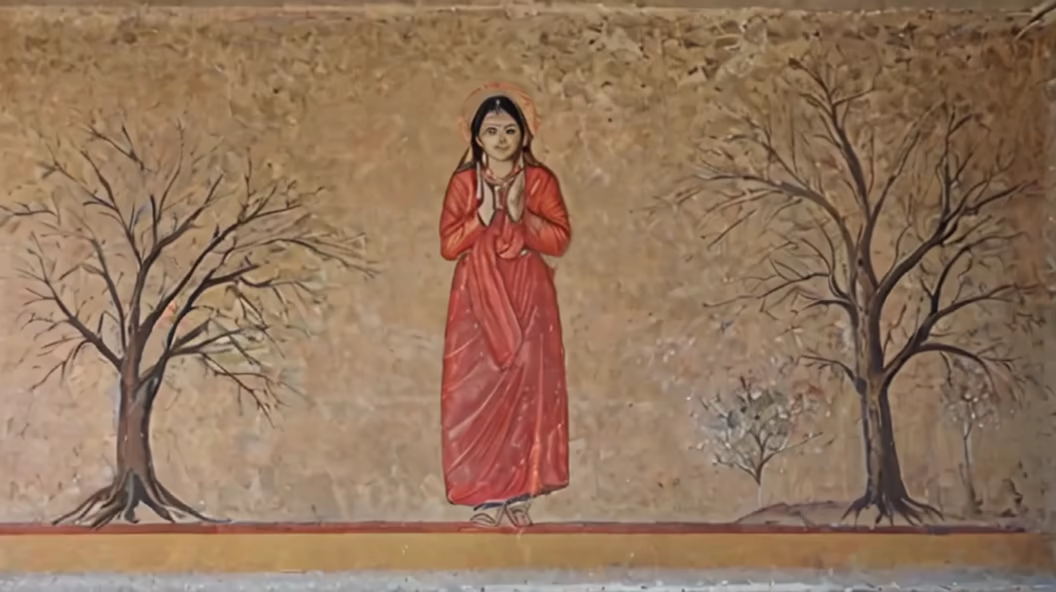
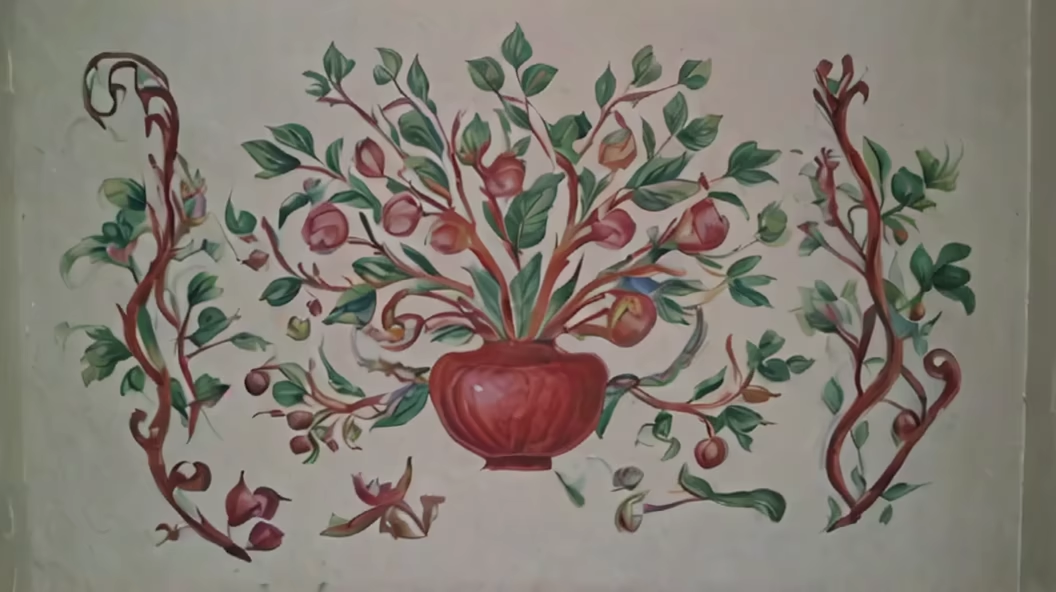

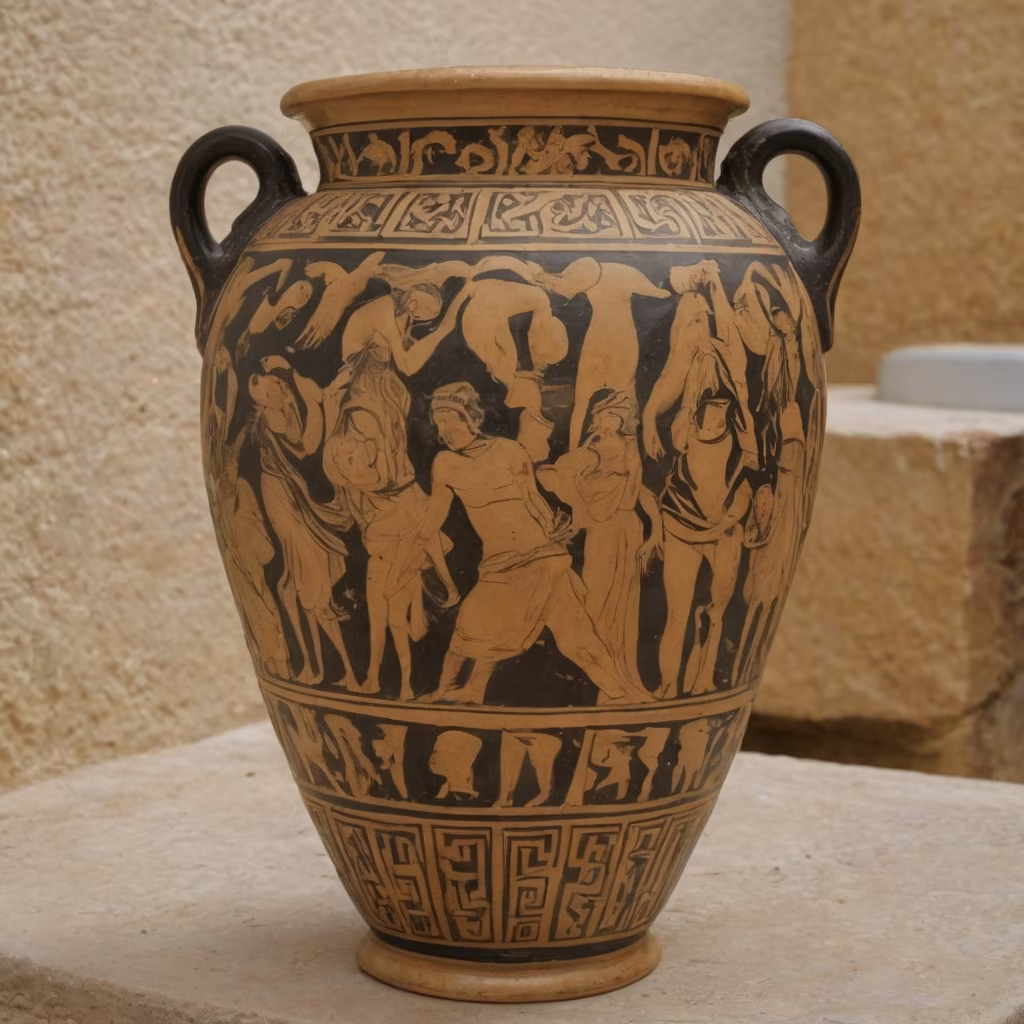





Prompt: Ancient murals from the Spring and Autumn period and the Warring States period depict scenes of sacrifice, hunting, and war. The sacrifice scene is solemn and mysterious, the hunting scene is vivid and realistic, and the war scene is bloody and intense. The murals feature smooth and powerful lines, vivid colors, and lifelike figures, showcasing the artistic talent and historical style of the ancients. These paintings are valuable cultural relics that allow us to appreciate the art and history of ancient China.
















Prompt: Ancient murals from the Spring and Autumn period and the Warring States period depict scenes of sacrifice, hunting, and war. The sacrifice scene is solemn and mysterious, the hunting scene is vivid and realistic, and the war scene is bloody and intense. The murals feature smooth and powerful lines, vivid colors, and lifelike figures, showcasing the artistic talent and historical style of the ancients. These paintings are valuable cultural relics that allow us to appreciate the art and history of ancient China.
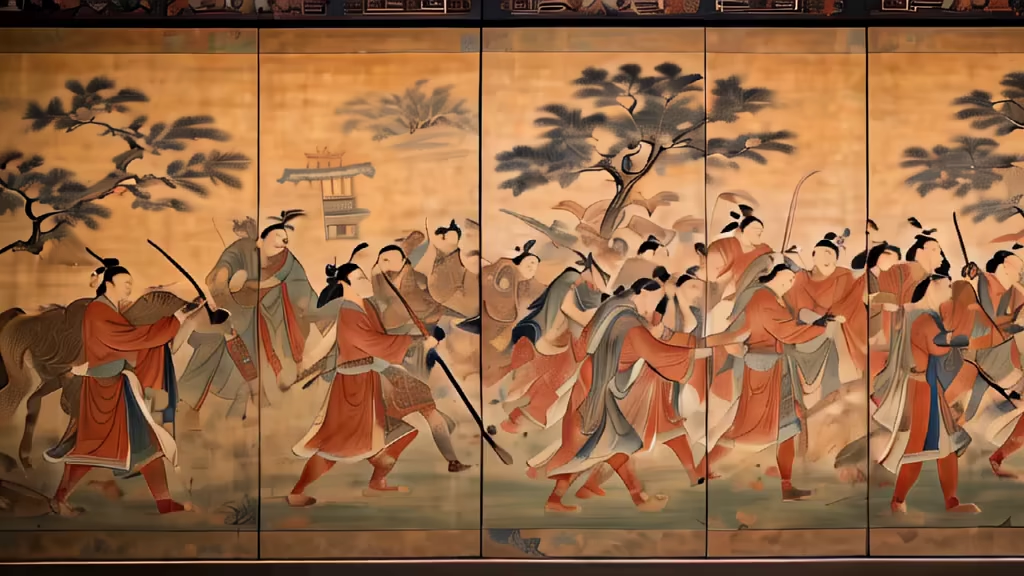
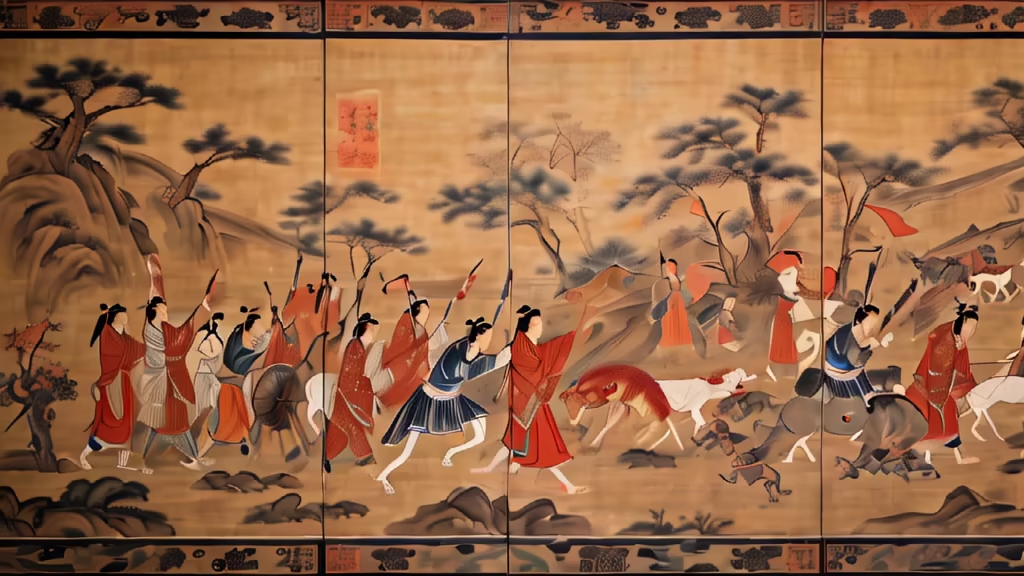
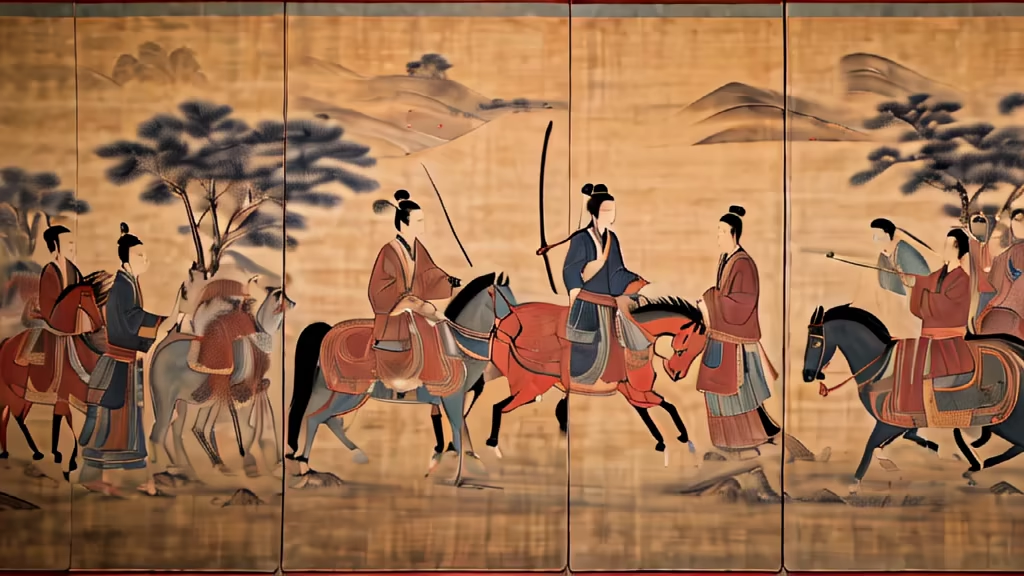

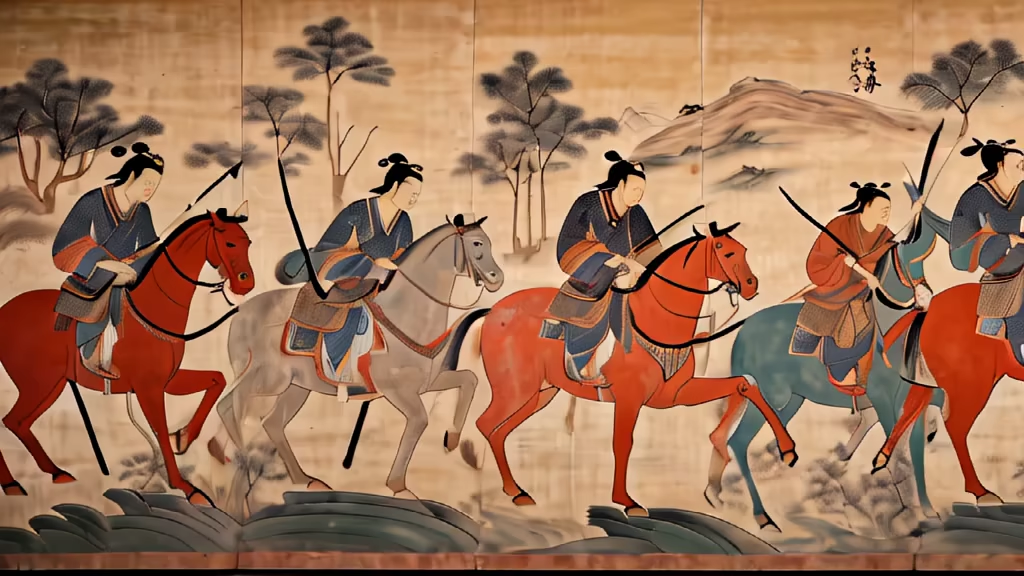
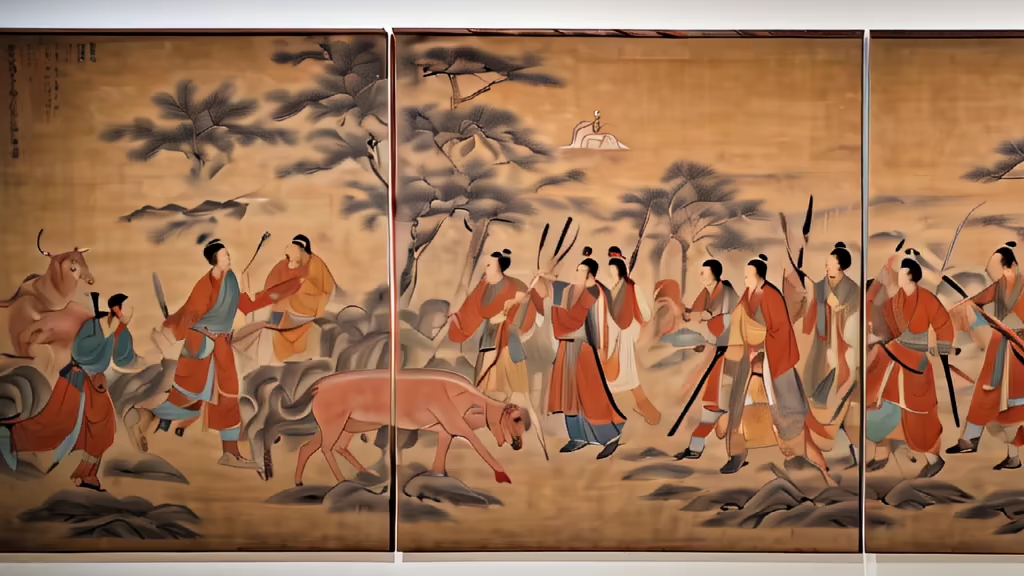
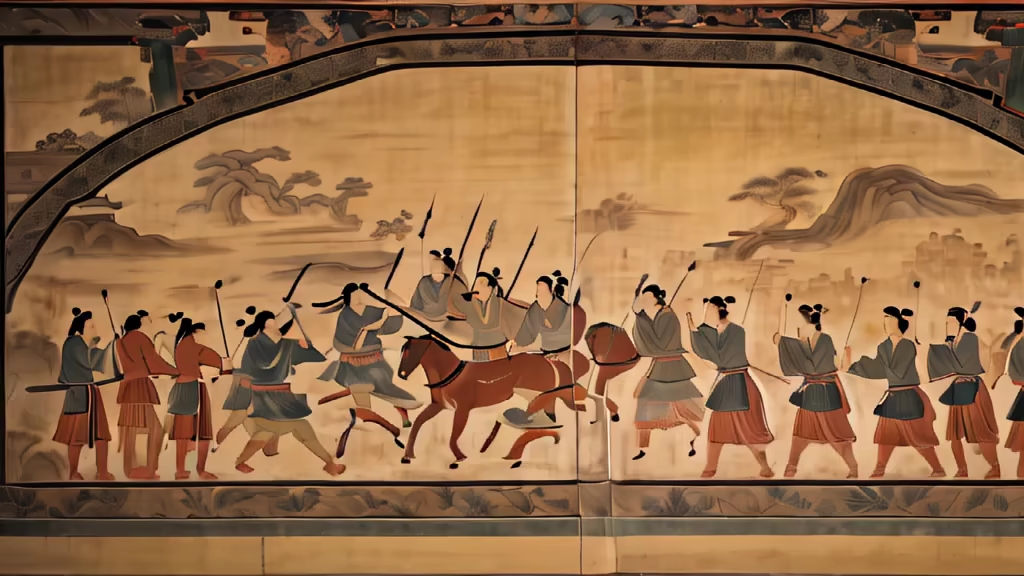
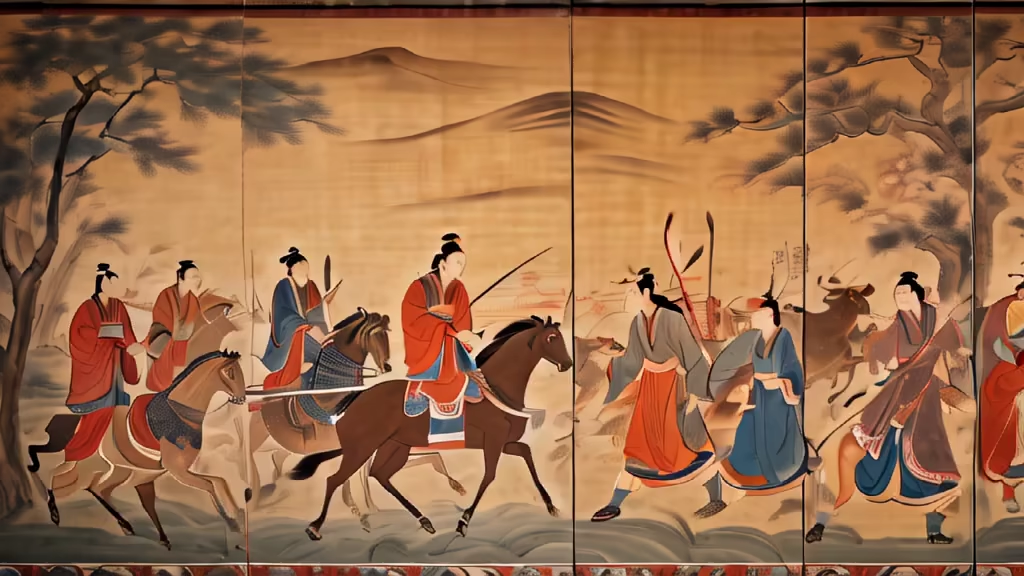
Prompt: Ancient murals from the Spring and Autumn period and the Warring States period depict scenes of sacrifice, hunting, and war. The sacrifice scene is solemn and mysterious, the hunting scene is vivid and realistic, and the war scene is bloody and intense. The murals feature smooth and powerful lines, vivid colors, and lifelike figures, showcasing the artistic talent and historical style of the ancients. These paintings are valuable cultural relics that allow us to appreciate the art and history of ancient China.
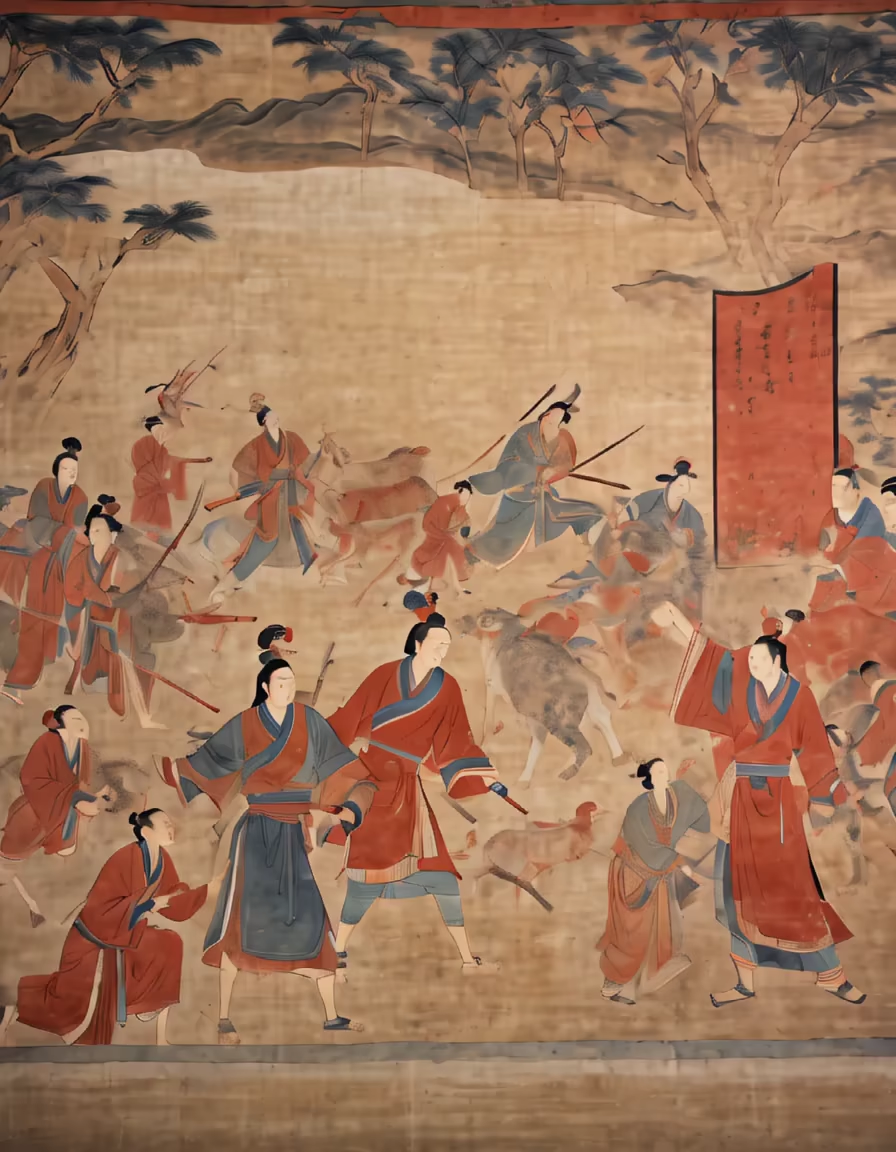
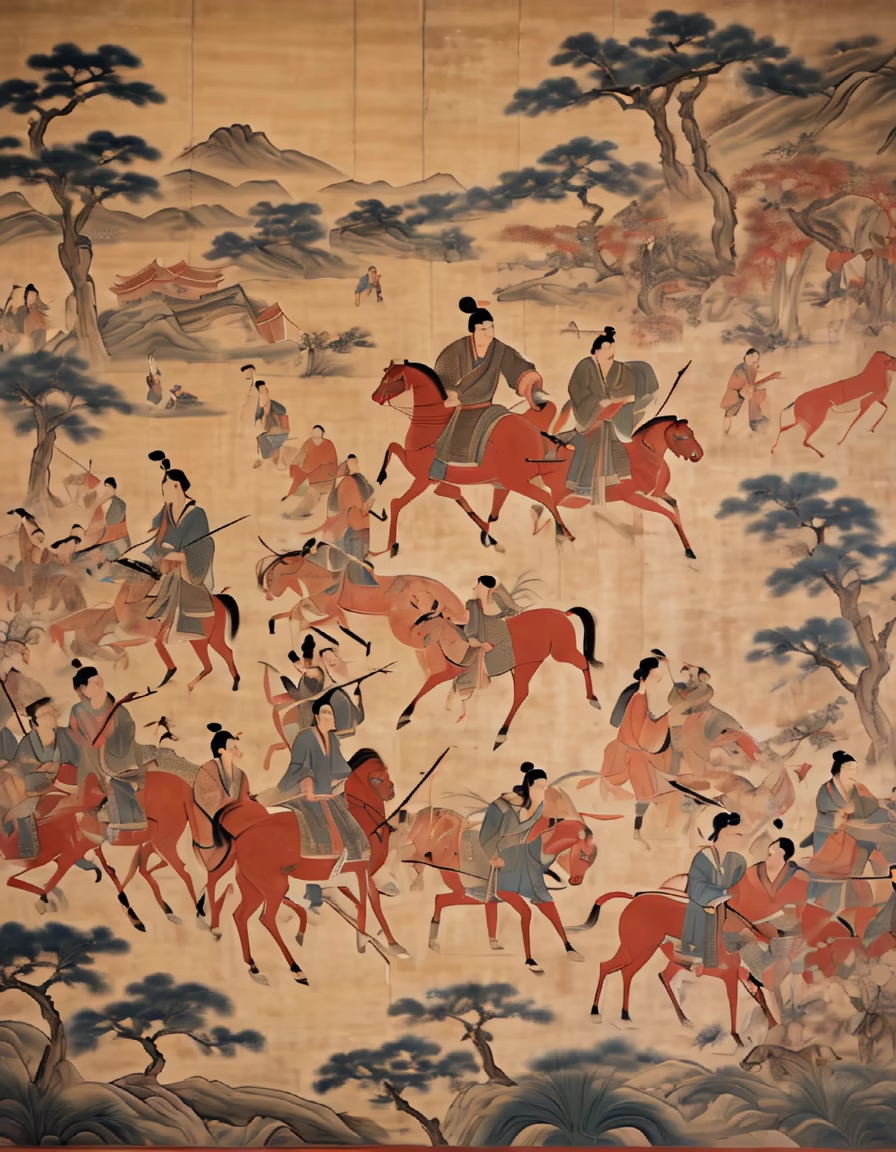
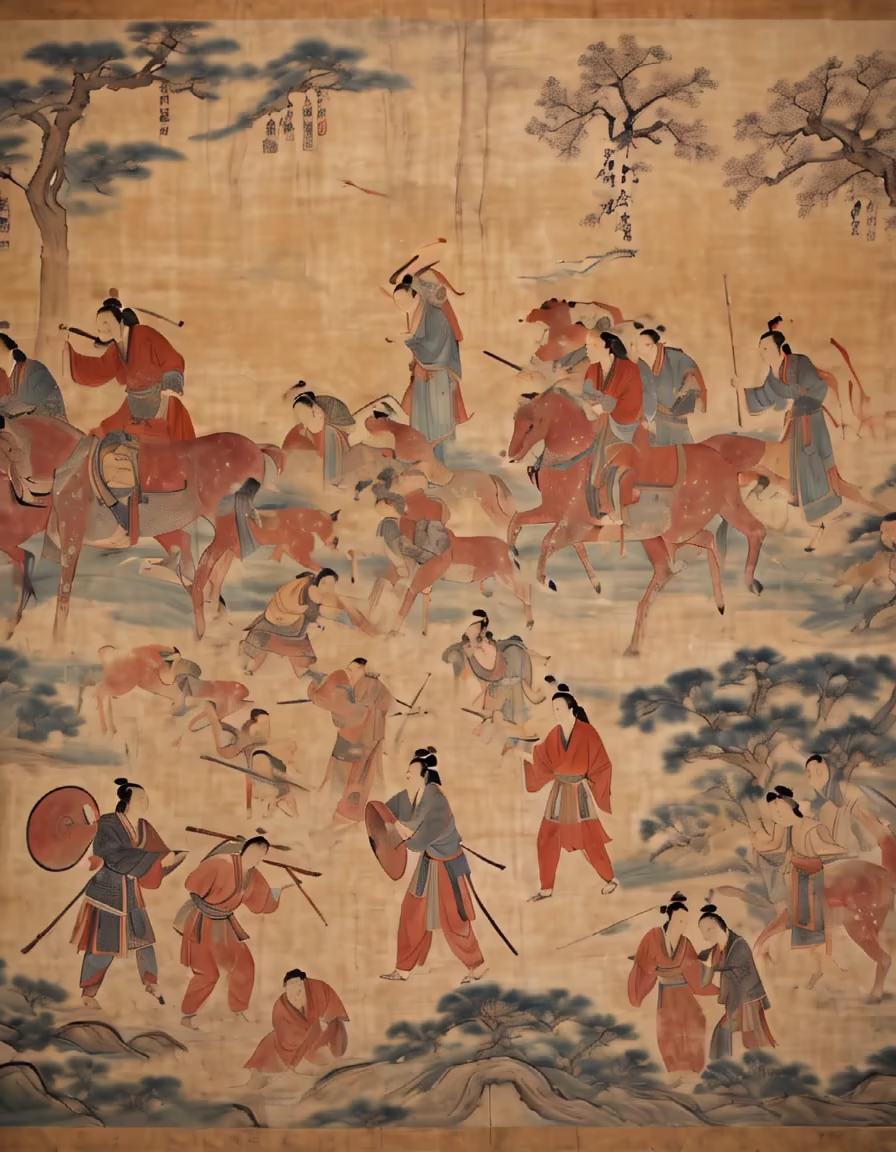

Prompt: Ancient murals from the Spring and Autumn period and the Warring States period depict scenes of sacrifice, hunting, and war. The sacrifice scene is solemn and mysterious, the hunting scene is vivid and realistic, and the war scene is bloody and intense. The murals feature smooth and powerful lines, vivid colors, and lifelike figures, showcasing the artistic talent and historical style of the ancients. These paintings are valuable cultural relics that allow us to appreciate the art and history of ancient China.


Prompt: Ancient murals from the Spring and Autumn period and the Warring States period depict scenes of sacrifice, hunting, and war. The sacrifice scene is solemn and mysterious, the hunting scene is vivid and realistic, and the war scene is bloody and intense. The murals feature smooth and powerful lines, vivid colors, and lifelike figures, showcasing the artistic talent and historical style of the ancients. These paintings are valuable cultural relics that allow us to appreciate the art and history of ancient China.
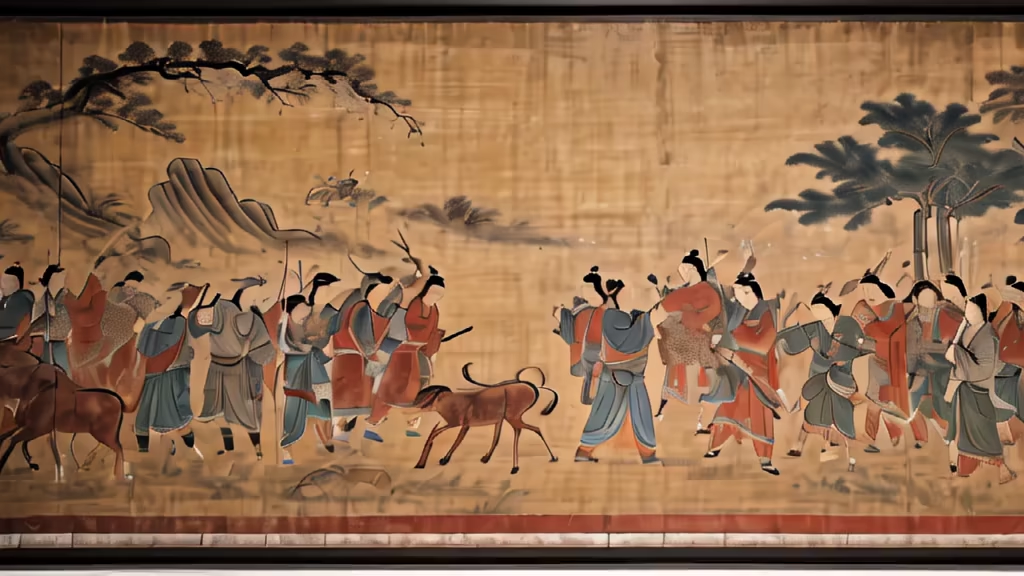



Prompt: create a film poster for a film titled SITARBUCKS that is based inside a coffee shop in mumbai, india, it has five charcters from all over india and different age groups who are the employees of sitarbucks coffee shop
Style: Digital Art








Prompt: In Greek mythology, the Titans (Ancient Greek: οἱ Τῑτᾶνες, hoi Tītânes, singular: ὁ Τῑτᾱ́ν, -ήν, ho Tītân) were the pre-Olympian gods.[1] According to the Theogony of Hesiod, they were the twelve children of the primordial parents Uranus (Sky) and Gaia (Earth), with six male Titans—Oceanus, Coeus, Crius, Hyperion, Iapetus, and Cronus—and six female Titans, called the Titanides or \"Titanesses\" (αἱ Τῑτᾱνῐ́δες, hai Tītānídes)—Theia, Rhea, Themis, Mnemosyne, Phoebe, and Tethys. Cronus mated with his older sister Rhea, who then bore the first generation of Olympians: the six siblings Zeus, Hades, Poseidon, Hestia, Demeter, and Hera. Certain descendants of the Titans, such as Prometheus, Atlas, Helios, and Leto, are sometimes also called Titans


Prompt: In Greek mythology, the Titans (Ancient Greek: οἱ Τῑτᾶνες, hoi Tītânes, singular: ὁ Τῑτᾱ́ν, -ήν, ho Tītân) were the pre-Olympian gods.[1] According to the Theogony of Hesiod, they were the twelve children of the primordial parents Uranus (Sky) and Gaia (Earth), with six male Titans—Oceanus, Coeus, Crius, Hyperion, Iapetus, and Cronus—and six female Titans, called the Titanides or \"Titanesses\" (αἱ Τῑτᾱνῐ́δες, hai Tītānídes)—Theia, Rhea, Themis, Mnemosyne, Phoebe, and Tethys. Cronus mated with his older sister Rhea, who then bore the first generation of Olympians: the six siblings Zeus, Hades, Poseidon, Hestia, Demeter, and Hera. Certain descendants of the Titans, such as Prometheus, Atlas, Helios, and Leto, are sometimes also called Titans


Prompt: In Greek mythology, the Titans (Ancient Greek: οἱ Τῑτᾶνες, hoi Tītânes, singular: ὁ Τῑτᾱ́ν, -ήν, ho Tītân) were the pre-Olympian gods.[1] According to the Theogony of Hesiod, they were the twelve children of the primordial parents Uranus (Sky) and Gaia (Earth), with six male Titans—Oceanus, Coeus, Crius, Hyperion, Iapetus, and Cronus—and six female Titans, called the Titanides or \"Titanesses\" (αἱ Τῑτᾱνῐ́δες, hai Tītānídes)—Theia, Rhea, Themis, Mnemosyne, Phoebe, and Tethys. Cronus mated with his older sister Rhea, who then bore the first generation of Olympians: the six siblings Zeus, Hades, Poseidon, Hestia, Demeter, and Hera. Certain descendants of the Titans, such as Prometheus, Atlas, Helios, and Leto, are sometimes also called Titans






Prompt: beautiful lady on a deck of a cruiser liner, beautiful sky, sea waves, seaguls, party, dancing people, photo realistic, video
Style: Low Poly
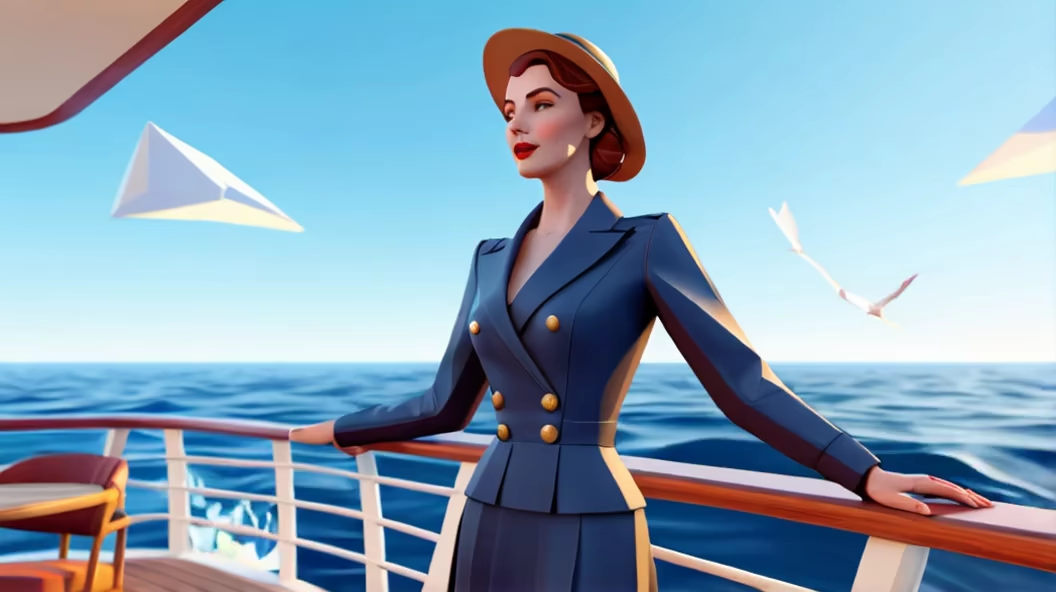

Prompt: full body, cat dressed as a Viking, with weapon in his paws, battle coloring, glow hyper-detail, hyper-realism, cinematic
Style: Cinematic










